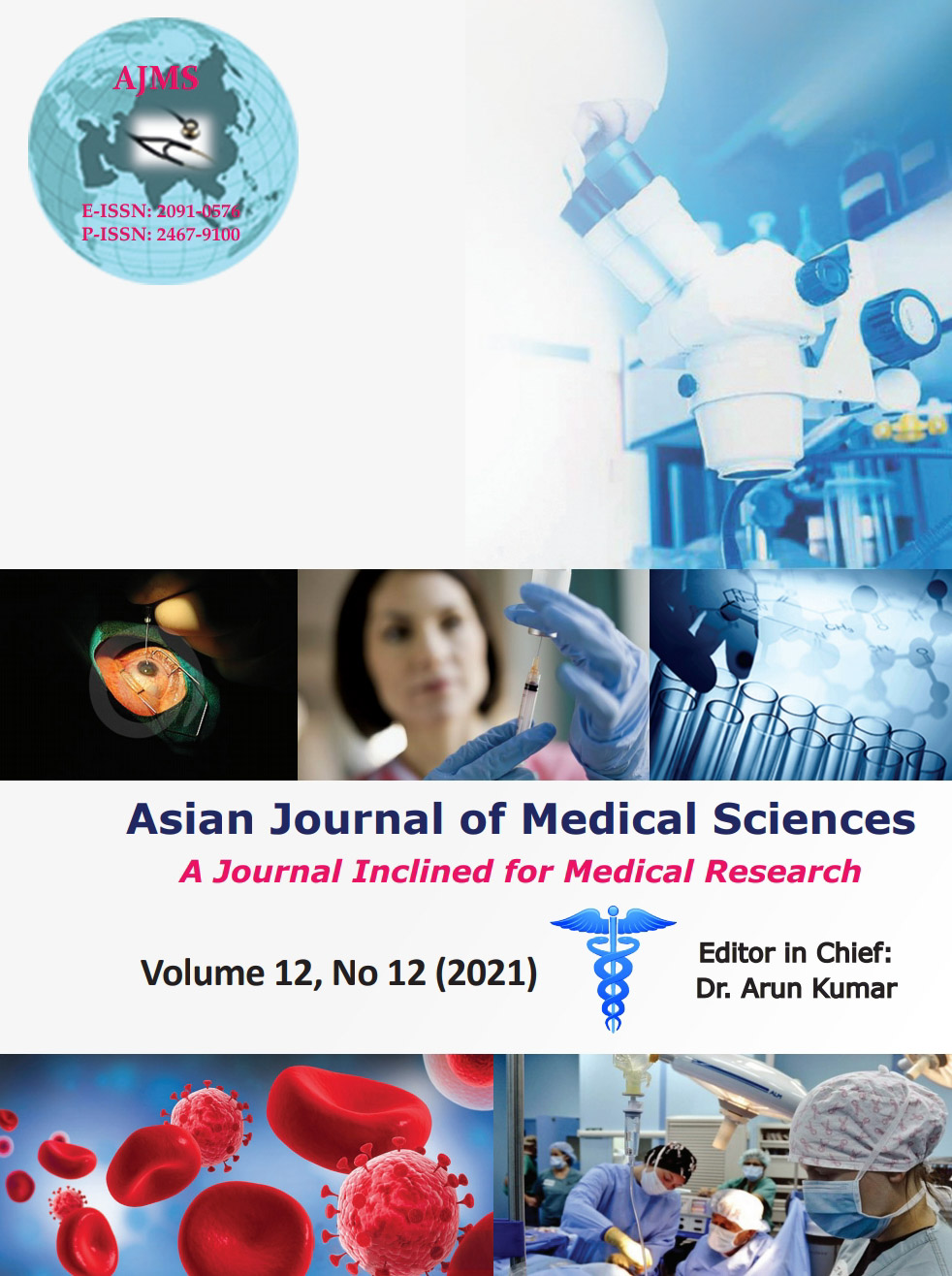Evaluation of atherosclerosis in patients with chronic kidney disease by measuring carotid intima media thickness: An observational study from a tertiary care center in India
Keywords:
Atherosclerosis, Carotid intima media thickness, Chronic kidney disease, Dyslipidemia, UltrasonographyAbstract
Background: Chronic kidney disease (CKD) is associated with a substantial cardiovascular mortality and morbidity. Besides other factors, accelerated atherosclerosis plays a significant role in this. Carotid intima media thickness (CIMT) is an index of systemic atherosclerosis. By measuring the CIMT with the help of B mode ultrasound at common carotid artery, the overall atherosclerotic burden in CKD patients can be estimated. Accordingly patients at increased risk of premature mortality can be identified so that timely intervention can be taken.
Aims and Objectives: The aim of the study was to measure the CIMT at the level of common carotid artery by B mode ultrasound for estimation of atherosclerotic burden in patients with CKD.
Materials and Methods: It is a hospital based observational cross-sectional study involving 70 patients carried out in the department of General Medicine of Medical College and Hospital, Kolkata for a period of 1 year. Patients were selected on the basis of certain inclusion and exclusion criteria. They were evaluated based on clinical history, disease duration, physical examination findings and certain investigation parameters such as complete hemogram, renal function tests, serum potassium, lipid profile, urinalysis, urine for albumin-creatinine ratio, ultrasonography of kidney-ureter-bladder, and CIMT value as measured by B mode ultrasound of carotid artery. The data collected were analyzed with a suitable statistical analysis software package. Range, frequencies, percentage, mean, standard deviation, and P value were calculated. P<0.05 was taken as significant.
Results: The study showed a strong correlation between CIMT and BMI (r=0.533, P<0.001). CIMT for serum triglyceride levels (≥150 mg/dl) were significantly (P<0.001) high in patients (mean±SD=1.45±0.559) mg/dl in comparison with serum triglyceride levels (<150 mg/dl) (0.98 ± 0.380 mg/d). Patients with high cholesterol of ≥200 mg/dl have a higher CIMT of 1.56±0.574 with P<0.001. There is statistically significant relation of LDL with respect to mean CIMT as P<0.001 at 1% level of significance. Hence, mean CIMT is more in LDL (≥130) than in LDL (<130). CIMT for HDL levels (<40 mg/dl) were high in CKD (mean=1.53±0.518 mg/dl) patients compared to HDL levels (≥40 mg/dl) (mean=10.88±0.291). It was found that mean CIMT was higher in the later stages of kidney disease (Stage 3B, 4 and Stage 5) as compared to early stages (Stages 1, 2, and 3). We also found that the Mean CIMT (1.214±0.531 was higher in patients with CKD compared to sonographically defined normal value (<0.9 mm). Hence, CKD patients who have traditional risk factors for atherosclerosis such as higher BMI, higher serum total cholesterol level, higher serum triglyceride level, higher serum LDL level, and lower serum HDL level have a higher value of CIMT.
Conclusion: B-mode ultrasound is a non-invasive sensitive tool for assessment of CIMT. Since CKD is associated with accelerated atherosclerosis and subsequent increased cardiovascular mortality, this modality may help us to identify patients with atherosclerotic burden so that timely intervention can be taken to reduce future cardiovascular complications in CKD patients.
Downloads
Downloads
Published
How to Cite
Issue
Section
License
Copyright (c) 2021 Asian Journal of Medical Sciences

This work is licensed under a Creative Commons Attribution-NonCommercial 4.0 International License.
Authors who publish with this journal agree to the following terms:
- The journal holds copyright and publishes the work under a Creative Commons CC-BY-NC license that permits use, distribution and reprduction in any medium, provided the original work is properly cited and is not used for commercial purposes. The journal should be recognised as the original publisher of this work.
- Authors are able to enter into separate, additional contractual arrangements for the non-exclusive distribution of the journal's published version of the work (e.g., post it to an institutional repository or publish it in a book), with an acknowledgement of its initial publication in this journal.
- Authors are permitted and encouraged to post their work online (e.g., in institutional repositories or on their website) prior to and during the submission process, as it can lead to productive exchanges, as well as earlier and greater citation of published work (See The Effect of Open Access).




